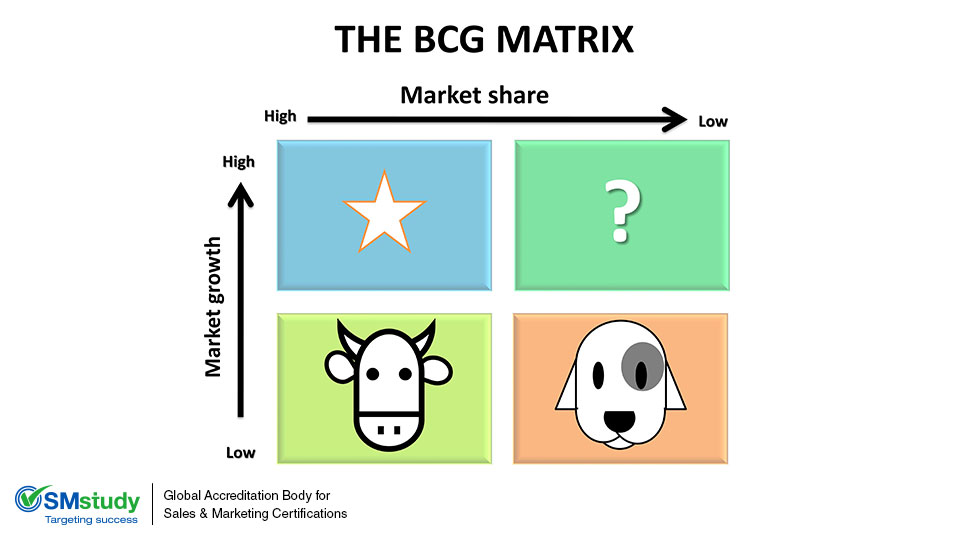The concept of Growth–Share Matrix was created by Bruce D Henderson for the Boston Consulting Group (BCG). It later came to be known as BCG growth-share matrix. During the late 1960’s this model was conceptualized to evaluate the potential of a product portfolio along with its strategic position in the business.
In the BCG growth–share matrix is one of the most sought after models to assess the strengths and weaknesses of the product portfolio of an organization. This matrix helps the organization to take corrective actions at proper time and frame strategies to increase profitability from each product in a particular portfolio.
In this matrix, vertical axis shows the market growth rate and horizontal axis represents the market share. The matrix divides each product from a product portfolio into the following four categories:
1. Cash Cows:
These are highly profitable products of a company. As these products have high demand and market share. They act as a great source of cash flow for an organization. The market share for cash cows should be monitored closely to ensure they do not move from the category of cash cow to the category of products classified as “Dogs.”
2. Stars:
As the name suggests, these are the star products of a company with high market share and high growth rate. These products lead the emerging markets. Although they are a great source of cash flow, the company needs to invest a lot in creating such products and carrying out its associated business and marketing operations. When the growth rate of such products lowers, they usually fall in the category of “Cash Cows” and help the company sustain the market share.
3. Dogs:
These product categories have very low market share in stagnant or declining markets, thereby generating low or no cash returns. Investments on such products are not recommended because they do not bring any remarkable benefits to the company. They may be utilized as a loss leader to gain the attention of new customers.
4. Question Marks:
These are the products with low market share but a high growth rate. The direction of such products cannot be predicted. If they continue with the high growth rate, they can become “Stars” over a period of time. And as the growth rate slows down, they may become “Cash Cows.” However, if these products continue to have a low market share, then over a period of time, as the market starts declining, these may fall in the category of “Dogs.” Hence, this product category is a question mark for an organization. These products cannot be left as it is though; at some point of time, the Management has to decide whether to invest in such products or not.
So, this matrix is used to evaluate the degree of appeal of every business unit and help the organization decide the appropriate amount of investment required in each product.


